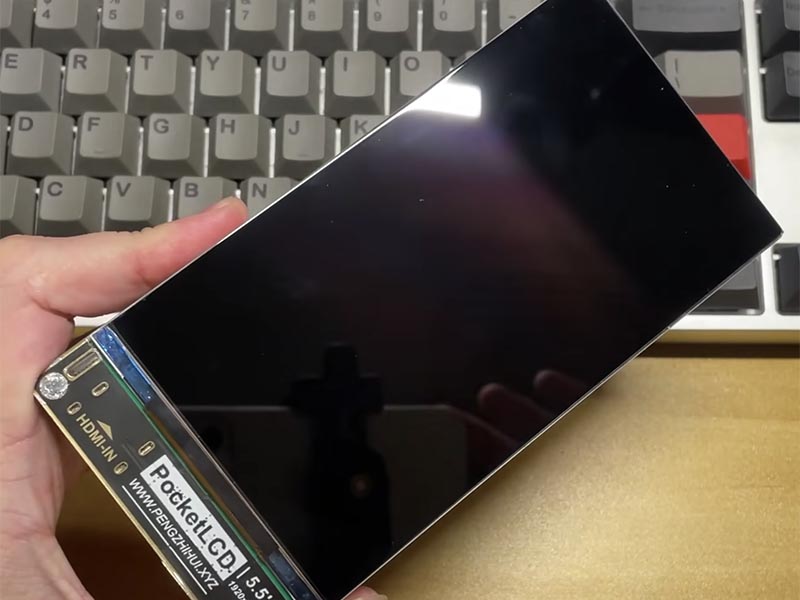Choosing the Right TFT Display for Embedded Systems
A detailed guide for engineers on how to choose the right TFT display for embedded systems, covering size, resolution, interface types, brightness, touchscreen options, and customization for industrial, medical, and IoT devices.

Introduction
In embedded systems design, the display is far more than a simple output component — it defines how end users interact with the device. For applications in industrial automation, medical equipment, smart appliances, or IoT devices, the display is often the most visible and user-facing element of the system. Choosing the right TFT (Thin-Film Transistor) display is therefore a critical step in ensuring usability, performance, and long-term reliability.
This article provides a structured guide for selecting the most suitable TFT display for embedded systems, highlighting the key parameters engineers should evaluate during the design process.
1. Display Size and Form Factor
The first step is to define the display size. Small handheld testers, wearables, or portable IoT devices may only require a 2.4”–4.3” TFT display, while larger systems such as smart home hubs or industrial HMIs use 7”–15.6” panels.
- Compact (2.1”–4.3”) – Ideal for portable or handheld devices with minimal UI complexity.
- Mid-size (5”–7”) – Common in smart control panels, automotive dashboards, and handheld terminals.
- Large-format (10.1”–15.6”) – Suitable for diagnostic instruments, industrial workstations, and medical monitors.
Form factor also matters. Round TFTs are increasingly used in knob-type UIs, while bar-type displays fit well in dashboards or narrow panel designs.
2. Resolution and Pixel Density
Resolution defines display clarity and sharpness. The wrong resolution can cause unreadable interfaces or strain the system’s GPU.
- QVGA / WQVGA (320×240 / 480×272): Ideal for basic graphics and low-power devices.
- HD (1280×720) / Full HD (1920×1080): Suitable for medical imaging or multimedia-rich HMIs.
- High Pixel Density (>200 PPI): Essential for smaller screens requiring crisp text and icons.
💡 Tip: Always balance visual sharpness with your embedded board’s GPU performance.
3. Interface Compatibility
Selecting the correct interface is critical for seamless integration with your embedded SBC or microcontroller.
- RGB Parallel: Simple implementation, best for short connections.
- LVDS (Low-Voltage Differential Signaling): Stable for industrial setups, supports long cable runs.
- MIPI DSI: Common in modern consumer and IoT products, enables high resolution with fewer pins.
- HDMI / eDP: Used in high-performance SBCs and multimedia systems.
Choosing an incompatible interface often forces the use of bridge ICs, increasing cost and design complexity.
4. Brightness and Sunlight Readability
Indoor environments may only need 250–400 nits of brightness, but outdoor devices demand higher luminance and optical enhancements.
- High Brightness (>1000 nits): Essential for outdoor kiosks, EV chargers, or portable testers.
- Optical Bonding: Eliminates internal reflections and improves sunlight readability.
- Anti-Glare Coating: Reduces reflections and improves comfort in bright conditions.
5. Viewing Angle and Panel Technology
Different TFT panel technologies offer trade-offs between cost, contrast, and visibility.
- TN (Twisted Nematic): Affordable but limited color and viewing angles.
- IPS (In-Plane Switching): Superior color accuracy and viewing angles; widely used in professional and industrial products.
- VA (Vertical Alignment): Excellent contrast but slower response time.
For medical or HMI applications, IPS is the preferred choice for consistent, accurate visuals.
6. Touchscreen Options
Touchscreens have become standard in embedded designs. Consider the following technologies:
- Resistive Touch: Works with gloves, low-cost, but single-touch only.
- Capacitive Touch (PCAP): Multi-touch, highly transparent, and responsive.
- Advanced Features: Glove and water tolerance, or high-sensitivity tuning for harsh environments.
7. Environmental and Reliability Factors
TFT displays in embedded systems must survive vibration, temperature shifts, and long operating hours.
- Wide Temperature Range: Typically -20 °C ~ +70 °C or higher.
- Long-Life Backlight: 30,000 – 50,000 hours for industrial use.
- Protective Design: Ruggedized glass and bonded layers improve durability.
8. Customization Possibilities
Off-the-shelf displays may not always meet your requirements. Custom TFT solutions can provide:
- Non-standard sizes or aspect ratios.
- Custom FPC layout or connector direction.
- Cover glass with logo, anti-scratch coating, or unique shapes.
- Enhanced brightness, optical bonding, or waterproofing.
Customization ensures better mechanical fit and long-term component stability for OEM mass production.
Conclusion
Selecting the right TFT display for embedded systems means balancing performance, visual quality, and environmental durability.
By analyzing parameters such as size, resolution, interface type, brightness, and reliability, engineers can build products that stand out in usability and lifespan.